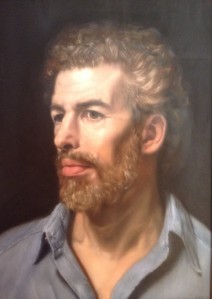In-Sight Publishing
Born to do Math 13 - Tension in Space
Born to do Math 13 - Tension in Space
Scott Douglas Jacobsen & Rick Rosner
March 20, 2017
[Beginning of recorded material]
Rick Rosner: With
electrons, we think of them as particles, but it may be helpful to think of
them as reflective of the tension between individual protons and the rest of
information space. Often, or sometimes, this tension takes the form of
point-wise or point-like electrons interacting via photons. Other times, the
electrons take the form of probability clouds – as we’ve noted off tape –
because electrons don’t actually orbit nuclei and protons like little planets
going around the Sun.
They exist instead as probability clouds of
various shapes, but not exactly spatially diffuse, but spatially undefined,
clouds around the protons or nuclei that they are associated with. And that’s
enough of that—but! To wrap up, it might be helpful to think of them as the
form that the tension between a proton—an electron can be thought of as—and the
rest of information space, whether it is point-wise particle or a probability
cloud.
Electrons are reflective of the tension
between individual protons and the shape of space, basically, which is
determined by the distribution of matter.
Scott Douglas Jacobsen: So you’re talking about a tension between
electron, proton, and space based on the distribution of matter, to summarize
quick.
RR: Yea, my guess is that the
electromagnetic interactions is what largely carries gravitation. That you
don’t need gravitons, which are gravitation carrying particles that have never
been discovered, but which are brutally hard to discover because the
gravitational force is 10^40th times weaker than the other forces.
Authors[1]

Rick Rosner
American Television Writer
RickRosner@Hotmail.Com
Rick Rosner

Scott Douglas Jacobsen
Editor-in-Chief, In-Sight Publishing
Scott.D.Jacobsen@Gmail.Com
In-Sight Publishing
Endnotes
[1] Four format points for the session article:- Bold text following “Scott Douglas Jacobsen:” or “Jacobsen:” is Scott Douglas Jacobsen & non-bold text following “Rick Rosner:” or “Rosner:” is Rick Rosner.
- Session article conducted, transcribed, edited, formatted, and published by Scott.
- Footnotes & in-text citations in the interview & references after the interview.
- This session article has been edited for clarity and readability.
- American Psychological Association. (2010). Citation Guide: APA. Retrieved from http://www.lib.sfu.ca/system/files/28281/APA6CitationGuideSFUv3.pdf.
- Humble, A. (n.d.). Guide to Transcribing. Retrieved from http://www.msvu.ca/site/media/msvu/Transcription%20Guide.pdf.
License
In-Sight Publishing and In-Sight: Independent Interview-Based Journal by Scott Douglas Jacobsen is licensed under a Creative Commons Attribution-NonCommercial-NoDerivatives 4.0 International License.
Based on a work at www.in-sightjournal.com and www.rickrosner.org.
Copyright
© Scott Douglas Jacobsen, Rick Rosner, and In-Sight Publishing and In-Sight: Independent Interview-Based Journal 2012-2017. Unauthorized use and/or duplication of this material without express and written permission from this site’s author and/or owner is strictly prohibited. Excerpts and links may be used, provided that full and clear credit is given to Scott Douglas Jacobsen, Rick Rosner, and In-Sight Publishing and In-Sight: Independent Interview-Based Journal with appropriate and specific direction to the original content.
No comments:
Post a Comment